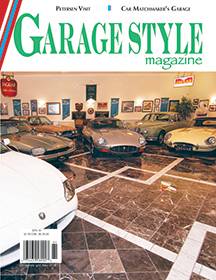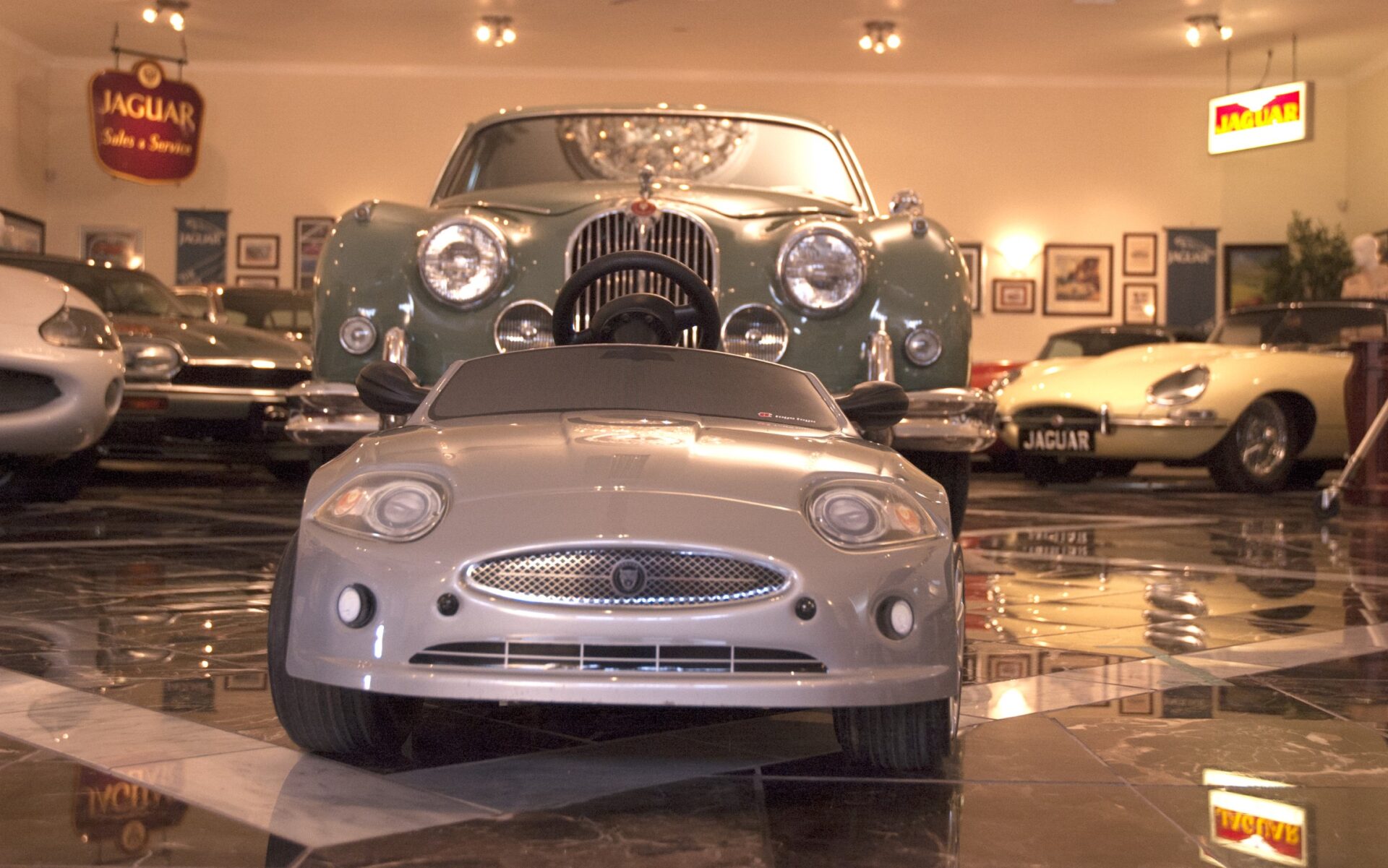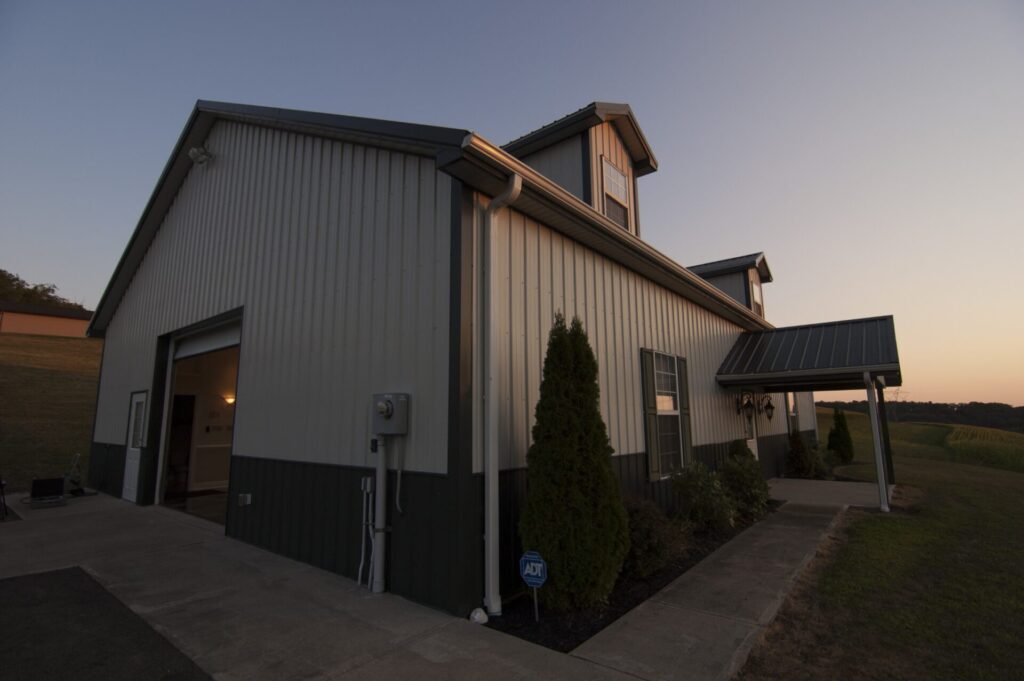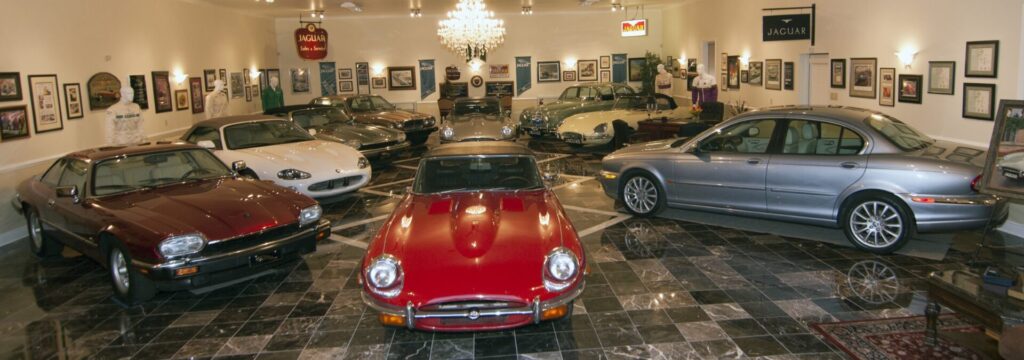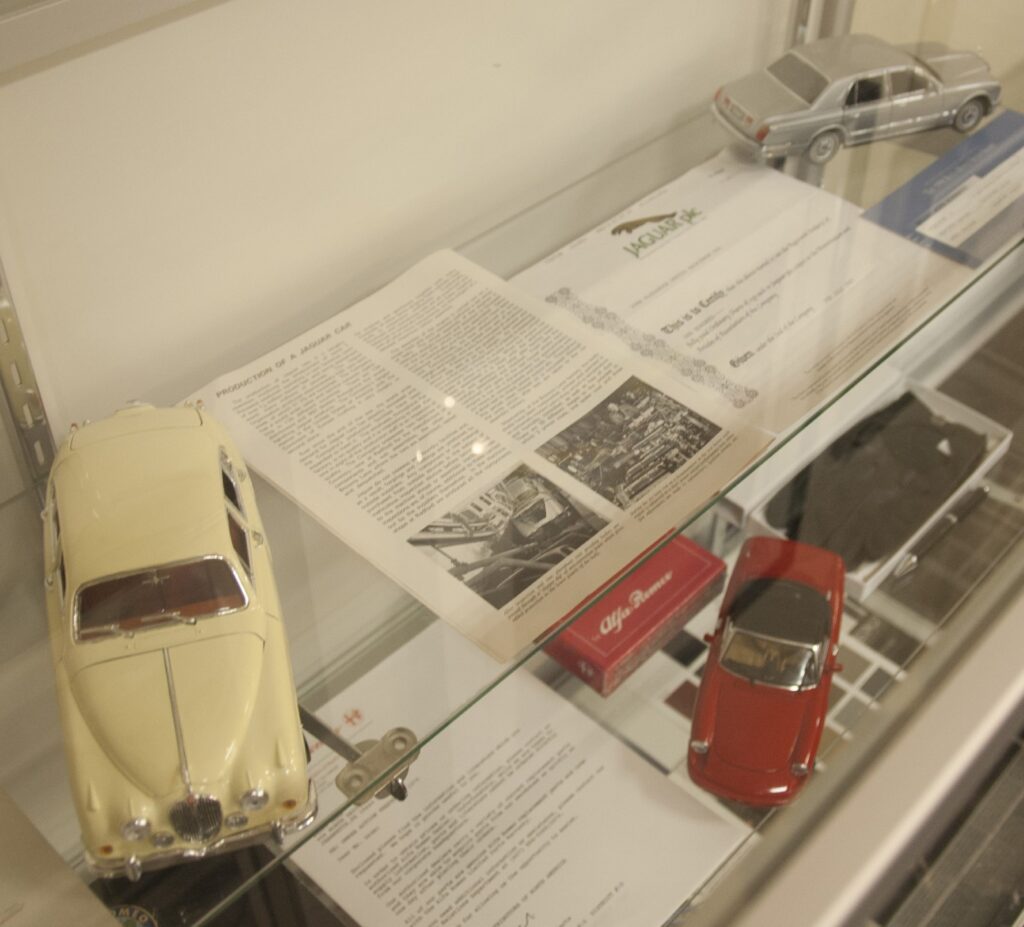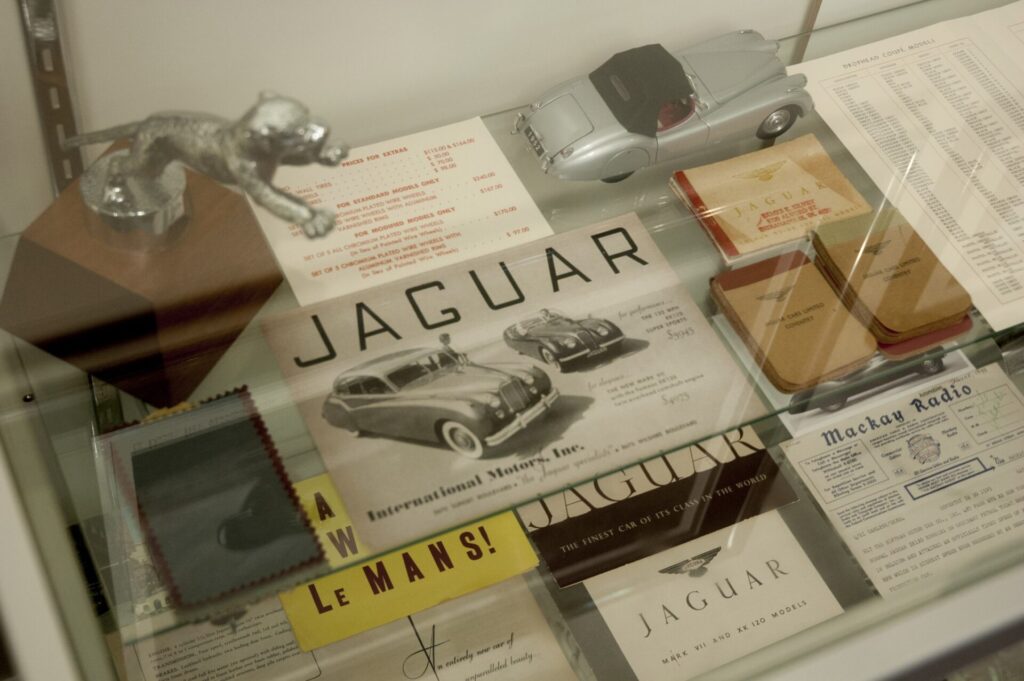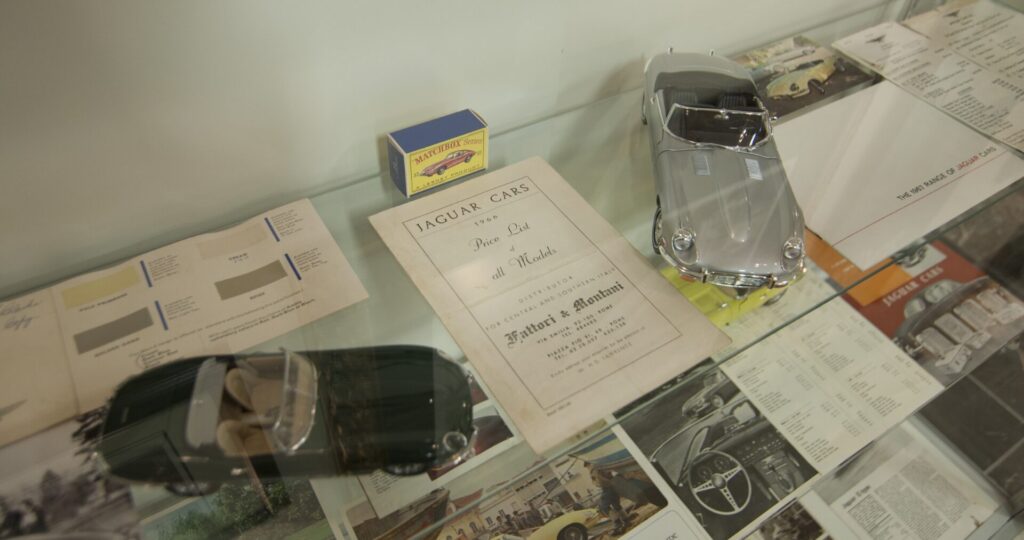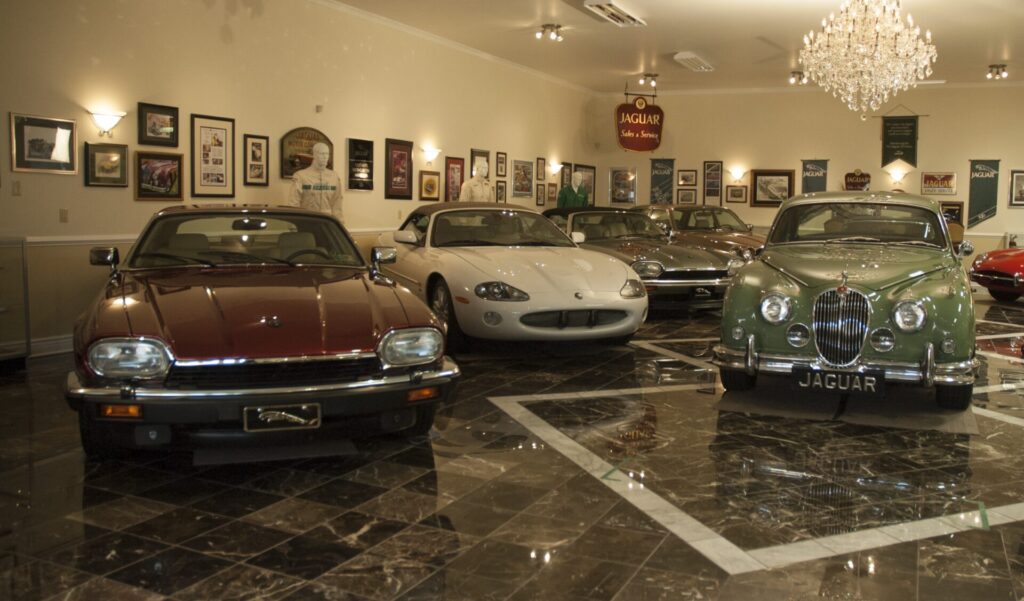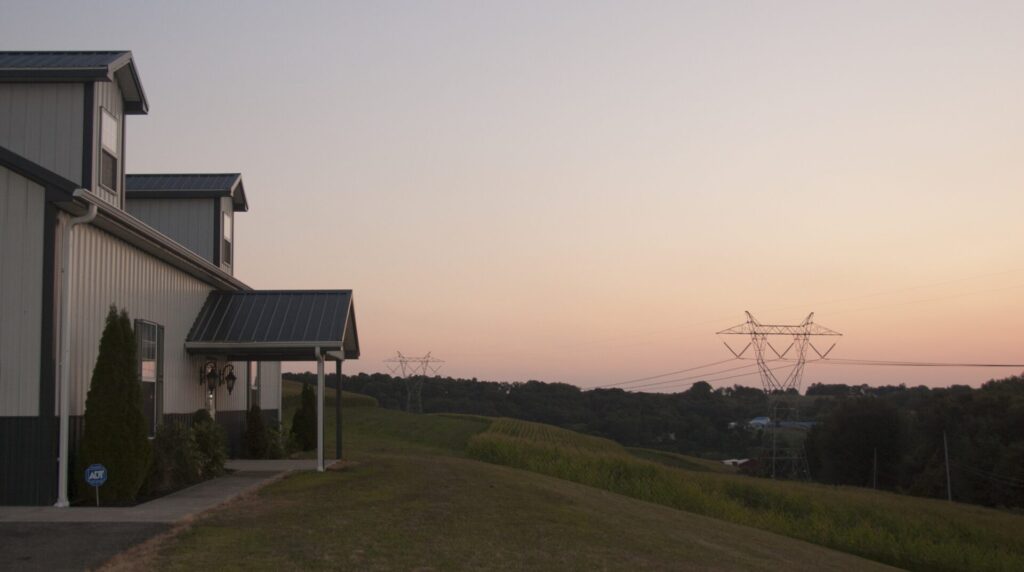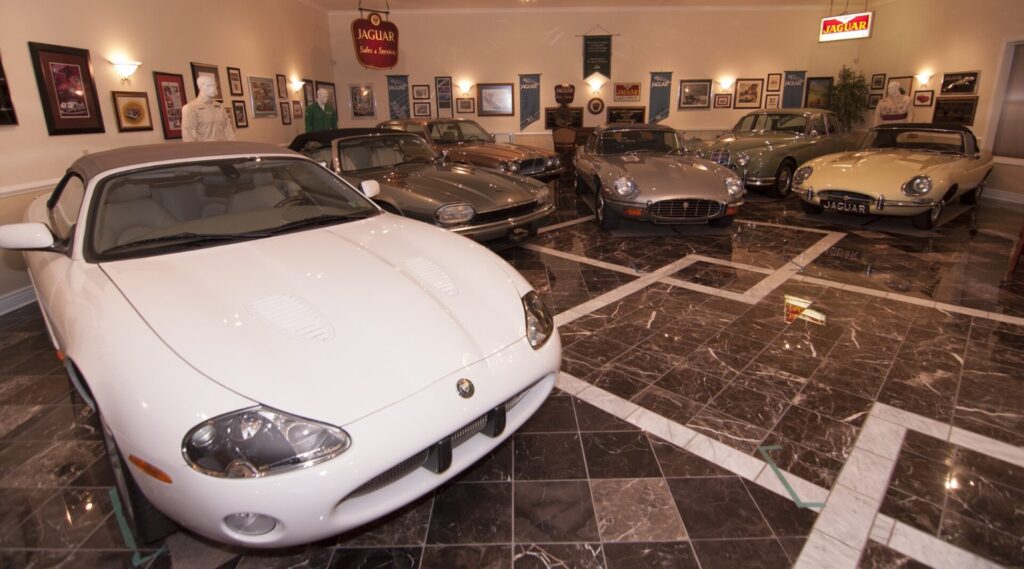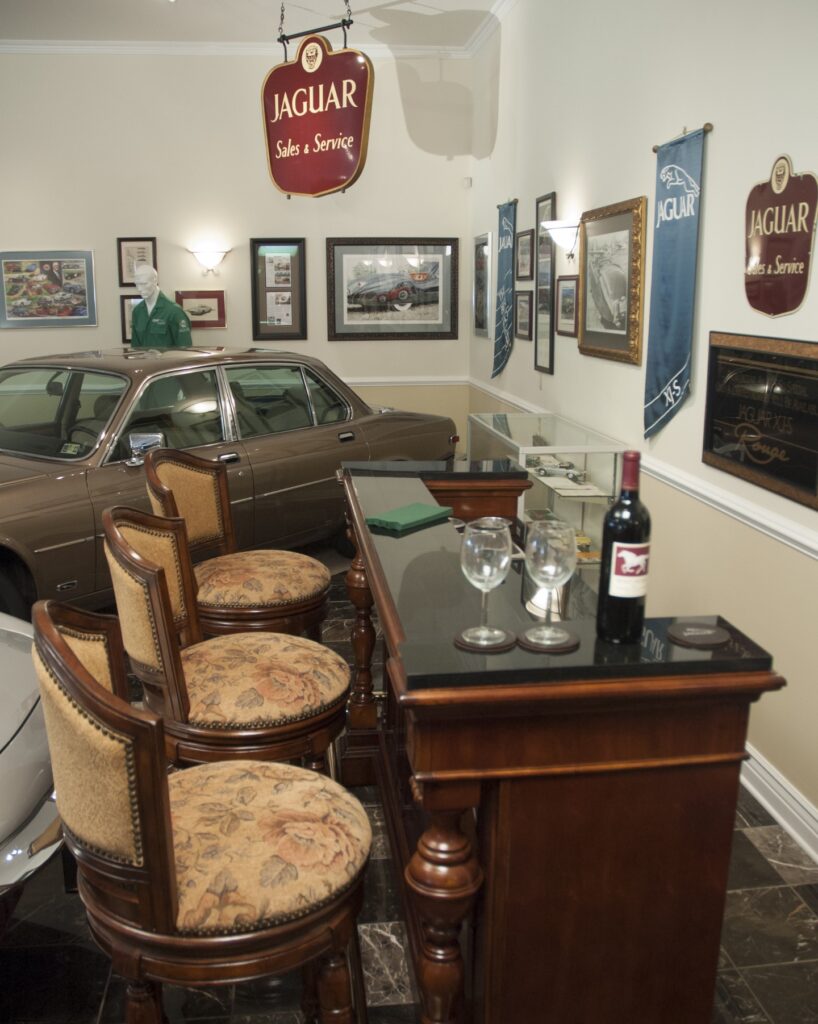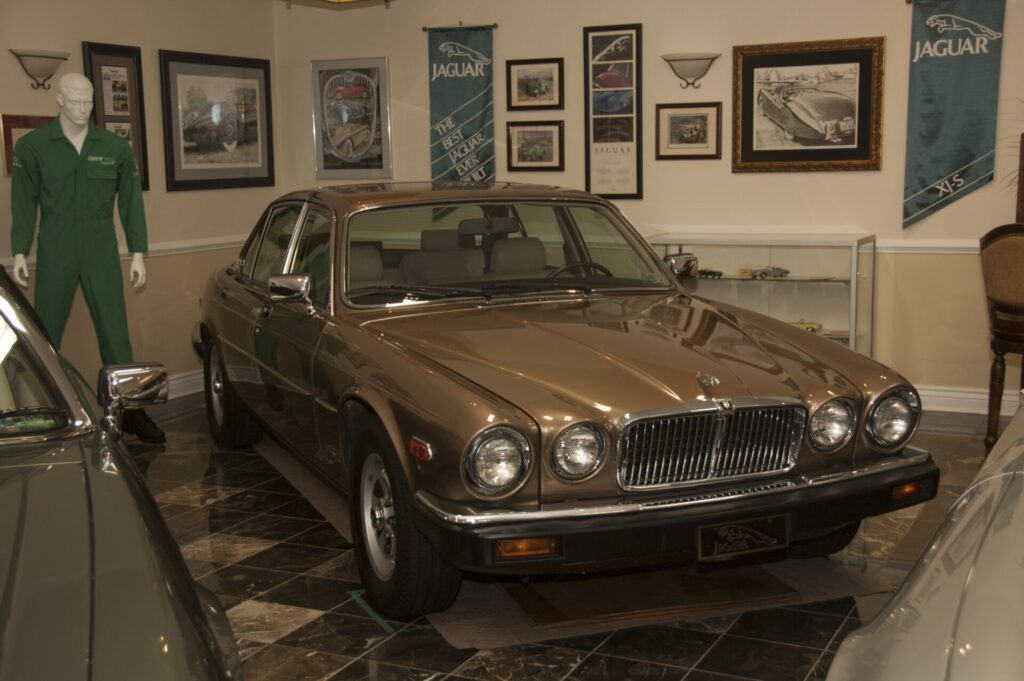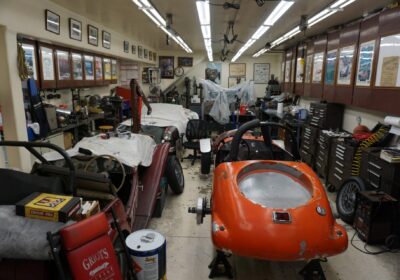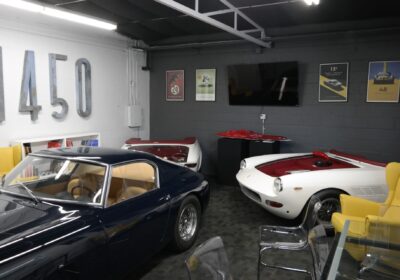Dealership-inspired setting is home to a Jaguar gathering
Images by Daniel McMullen
Max Hoffman imported a lot of cars. Some say he made foreign cars less foreign to Americans. So successful was he that he actually influenced and persuaded manufacturers to produce specialized vehicles just for specialized markets. The Porsche 356 Speedster was largely pressed into production by Hoffman, and he was an enthusiastic supporter of the BMW 2002. His work with Jaguar was the stuff of legend, and when he hired famed architect Frank Lloyd Wright to design his flagship New York showroom, the legend was crystalized. The Park Avenue showroom was the likes of no other, with massive glass walls, raised pedestals to emphasize cars, and a long, sweeping ramp rounding a rotunda winding up to a balcony. As many as seven cars could be parked upon the ramp. Being in New York, space was at a premium, as such things had to be kept efficient, and they were – without the ramp, far fewer cars could be displayed. As such, the ramp and rotunda were not only for display, but practical purposes as well. The dealership had one goal, to make a lasting impression, to influence customers that these were more than just cars, these were rolling lifestyles, objects of sophistication, aspirational desires, symbols of dedicated, hard work – in a phrase, they were personal rewards.
One of the brands he imported was Jaguar. He brought the likes of XKs, E-Types, Mark Xs and many more from Coventry to New York, and presented them to a discerning clientele and cultivated the media to feature them and help them become household names. To say he was a visionary would be an understatement, and his showroom largely exemplified this. After a long, extremely successful run in the automotive business, Hoffman sold his dealership in the mid-1970’s and passed away in 1981. In his wake, a long succession of fans continues to admire him to this day. One such man influenced by the work of Hoffman is Scott, a Jaguar man to the core, who, upon a pastoral field in Pennsylvania, erected a pole building to house his collection of Coventry classics. Inside the relatively simple structure, the garage is reminiscent of the showroom Frank Lloyd Wright designed complete with a selection area, marble floors, a crystal chandelier, a bar, and oodles of interesting Jaguar-specific artwork.
“Passing by, no one would ever know what was inside,” said Scott. “It looks like one of the many storage buildings in the area housing farm equipment and tools.”
Entering the stealthy structure, a paradox occurs, where you are transported from mild mannered American farm to luxuriously appointed collection. It’s a little mind bending stepping from pastoral ranching surrounds into a room of wainscoting, marble floors, crown molding, gallery lighting, a centerpiece chandelier, and a belt of art mounted to the wall circling the room. If it doesn’t remind of a Jaguar showroom, it’s likely nothing will. Artistic tributes to Sir William Lyons abound in a manner of how Ferrari collectors may honor Enzo Ferrari, one of which is unique, a painting of a photograph of Lyons alongside a light green E-Type.
“The artist, Norma G. Nieto, took an original photograph of William Lyons standing before an E-Type, and copied it in paint to make it a painting instead of a print,” he said. “This painting was commissioned to mark the 50th anniversary of the iconic Jaguar E-Type and the reserved visionary founder of Jaguar Cars, Sir William Lyons.”
“Capturing Sir William’s persona accurately and getting the details of the car just right were really important to me,” Drab said. “This painting is unique in that it is done with raised oil and knives rather than a brush.”
Other unique original and collection-specific works are also present. Standing here and there are mannequins wearing Jaguar racing suits, one of them signed by a driver. A library of literature has also been amassed, kept in glass retail-style display cabinets for viewing and protection, including paint swatches and leather samples, special factory correspondence, and many odds and ends that any car enthusiast can appreciate, but that Jaguar fanatics would be slack jawed to discover.
“I’ve collected a lot of Jaguar items that mean a lot to me, collectively they build on the cars and the cars build upon them,” he said. “I think collecting the memorabilia is just as much fun as collecting the cars, and actually maybe more so, because you can collect more and not run out of space as easily.”
Scott was bitten by the Jaguar bug early on, partially through Matchbox die cast toys. He loved the flowing lines of the XKs and E-Types, their shapes romancing him to take note and study further down the lineage of Jaguar until he’d consumed nearly every drop of history the company had to offer. He’s also got quite an impressive collection of tiny Jaguars.
“These cars are fascinating in a number of ways,” he said. “Their designs are largely singular in that there are no other cars out there that even come close to looking like a Jaguar, making them remarkably unique. Their performance was miles ahead of so many, and particularly with the E-Type, you had a luxuriously appointed and civilized car that a person could enjoy an evening out with a significant other, but it was aggressive enough that it would compete very rigorously on any racetrack. On top of that, they’re beautiful cars.”
One piece of memorabilia Scott has placed in the room is a large Leaper. Black and shiny, the Leaper was part of a set in front of a private home. When the home was sold, the new owners were going to demolish them to get rid of them, Scott was able to save one, the other being destroyed before Scott knew what was going on. An impressive piece, again, any car enthusiast would love to have it, but specifically Jaguar collectors go bonkers for it.
While all of Scott’s cars are highly coveted and unique, two stand out from the crowd in an extraordinarily subtle manner, a 1967 MK 2 and a 1987 Vanden Plas. While these two might simply be passed up by regular car guys as ‘just another couple of sedans,’ Jaguar devotees will remark on the VPs excruciatingly good condition, superlatively low miles, and unique color combination while the MK 2 will simply confuse them if they let it. This MK 2 is one of 719 3.4-liter cars rebadged by the factory as a 340 to bolster sales and move remaining stock. It has a MK 2 serial number and characteristic large MK 2 bumpers, but carries the 340 script, wheel discs, and 340 interior trimmings. In addition, this car was loaned to comedian Jerry Seinfeld for an episode of “Comedians in Cars Getting Coffee.” The car can be seen taking Seinfeld and comedian Robert Klein to various places in New York including a rare stop at Sing Sing prison.
The building was manufactured by Alpha Buildings of Elizabethtown, Pennsylvania. Specializing in post-frame and pre-engineered buildings, Jack Pore Construction of West Newton, Pennsylvania brought it all together and addressed some personal touches Scott wanted to give the building a little more personality than just a big white box. Inside the space measures 40’ wide x 60’ long x 12’ high. Alpha provided a package building including lumber for framing, steel paneling for the exterior, and many other assorted pieces for a complete piece.
“It’s a nice building, Scott picked out the colors and installed the marble floors,” Jack said. “We did the insulation and interior walls, installed the utilities and wiring, the restrooms, the lighting. Scott hung the chandelier after we were done, and it was a great centerpiece.”
A very unique feature about the building is the radiant heat installed by Francis Heating and Cooling of West Newton, Pennsylvania. Don Francis installed a Weil-McLain high efficiency boiler and ran pipes in the concrete foundation.
“The nice thing about this type of heating is that it costs you nothing,” he said. “The house is using hot water already, so the boiler is already heating the water and running it through the floor in the building.”
One benefit to a radiant system, particularly for a garage, is the lack of air movement. The garage is completely closed off from the outside unless you open a door or window, so there is no dust flowing around, which lends to a fabulously clean environment. Another is the cost effective nature of the system.
“They’re about 40 percent more expensive than a traditional heating system to install, but in about 5 years it starts to pay for itself,” said Don. “When you consider that there are no filters to replace and it’s sharing hot water the house is using, the cost to run it is minimal.”
All things told, Scott has built a fantastic tribute to the entire classic Jaguar realm. The elegance and warmth, sophistication and refined power are all blended together well within. Stopping into Scott’s garage is truly like stepping into a dedicated Jaguar museum. His efforts are inspirational in many ways. Scott’s garage is not a man cave, not by any stretch, it’s far too elegant for that phrase; it’s a place where both men and women can relax and enjoy company, a rare feat for most garages. It’s also a testament as to what can be done with a purpose-built steel building.
“It’s been a lot of fun building the collection and creating the garage,” said Scott. “I’m not sure I’d want to do anything differently if I were to do it over again.”
